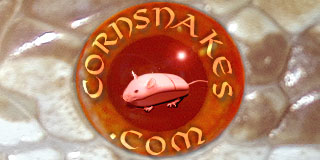Ball Pythons--
Typically, anything but a normal is going to run upwards of $100. Not sure about anyone else, but when I was 16, $100 was a fair amount of money for a pet.
You might want to re-check your statistics on morph prices. Pastel males run roughly $40, and females $75. Yellowbelly's are about the same. A lot of morphs have come down drastically compared to their prices even last year.
tyflier said:
They go off feed. This is not a myth, this is a fact. They often go off feed before winter sets in. They often go off feed before breeding season begins. The often go off feed post-breeding. They often go off feed due to minor changes in temperature, humidity, surrounding activity, and location. In general, and very typically, ball pythons can be difficult feeders. Some will refuse to eat for several months at a time due to no discernible reason whatsoever, then suddenly eat ravenously, again, for no discernible reason.
You might want to have some fact to back up your claim. This isn't 1995, and Ball Python care has come a long way. Especially since then. Captive hatched and wild caught normals are no longer the normal supply of animals on the market, and most feed ravenously. If they went off feed so easily, they'd go off feed due to changes in your weather during summer, or spring, regardless cage climate. Barometric pressure would play a large part in that. According to your judgment on them, the majority of my hatchling's, juveniles, and sub-adults should be off feed right along-side my adult's. They're not, and they have no supplemental heating right now. What gives? :shrugs:
tyflier said:
Compared to the consistency of such snakes as corns and kings...ball pythons are picky eaters.
Yet your looking at one side of the coin. Ball Pythons are specialized, feeding specifically on mammalian prey. Corn snakes, and King snakes are opportunistic hunters that feed on a larger variety of prey. Most want their Ball Pythons to feed on f/t. Why? Feed them live, and there's no problem. There's a reason they have heat pits, and Corns/Kings don't...
tyflier said:
Temperature and humidty are much more important to these animals. Minor fluctuations up or down in temperature and humidity can cause a variety of issues.
Name some, other than these 'increasingly common' feeding issues? I wouldn't say minor, but more along the lines of a range. Do that with any reptile, and you'll see that they all have specific needs. You're not going to keep a Corn Snake like a Ball Python, and you're not going to keep a Ball Python like a Cobra. We're not talking about rocket science, or caring for a touchy species such as Emerald Tree Boa's. We're talking about an animal, rated as one of the best beginner snake species,
and for reason.
tyflier said:
Someone claiming to be incredibly knowledgeable asked how they survive in the wild if they are that sensitive. The answer is by retreating underground where temperatures and humidity levels are almost always stable, dependant upon the depth of the burrow. When the plains of Africa are 125*F, they go into a burrow that is sitting at around 90*F. When the plains drop into the low 40*F range, they go into a burrow that sits at a comfortable 75*F range to brumate. Don't make the mistake of thinking a tiny, little glass aquarium with a heat mat and a couple inches of shredded substrate is even remotely comparable to a wild habitat range. That's just plain silly...
According to your assumptions, my hatchling's and juveniles should be off feed, and burmating.. Why aren't they? They have no supplemental heating. And there are just too many of them for it to be a simple coincidence, eh?
They don't retreat underground. The majority of their lives are spent in a fossorial life-style. If you really think burrow life is that stable, you should re-check your calculations. Numerous risks include subsiding in a burrow that is too cool, too warm, too humid, not humid enough, infested with parasites such as ticks; etc.
As for Burmating. When it cools, they don't. They breed, and feed. Younger animals feed, while the animals large enough to breed continue to, as they feed. Females build and feed to provide nutrition for their developing eggs, and to survive the exhausting task of reproduction.. Males feed to maintain body weight, from the extreme limits they push their own bodies while feeding.
Females may go off feed naturally, after ovulating to allow her eggs to develop without risk of damage. Guess what? Plenty of other species do as well. Now if you're keeping one as a pet. What is there to worry about?

